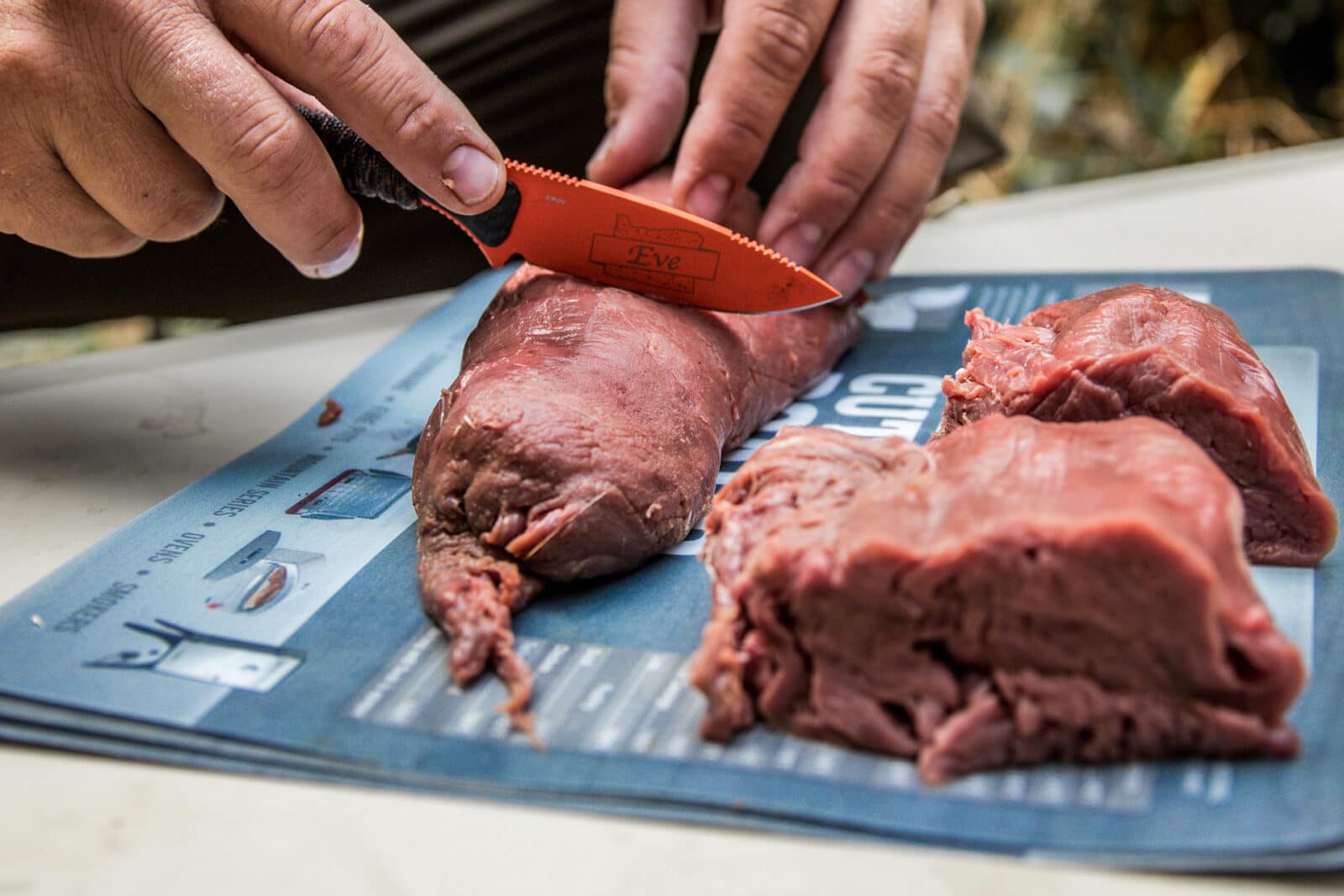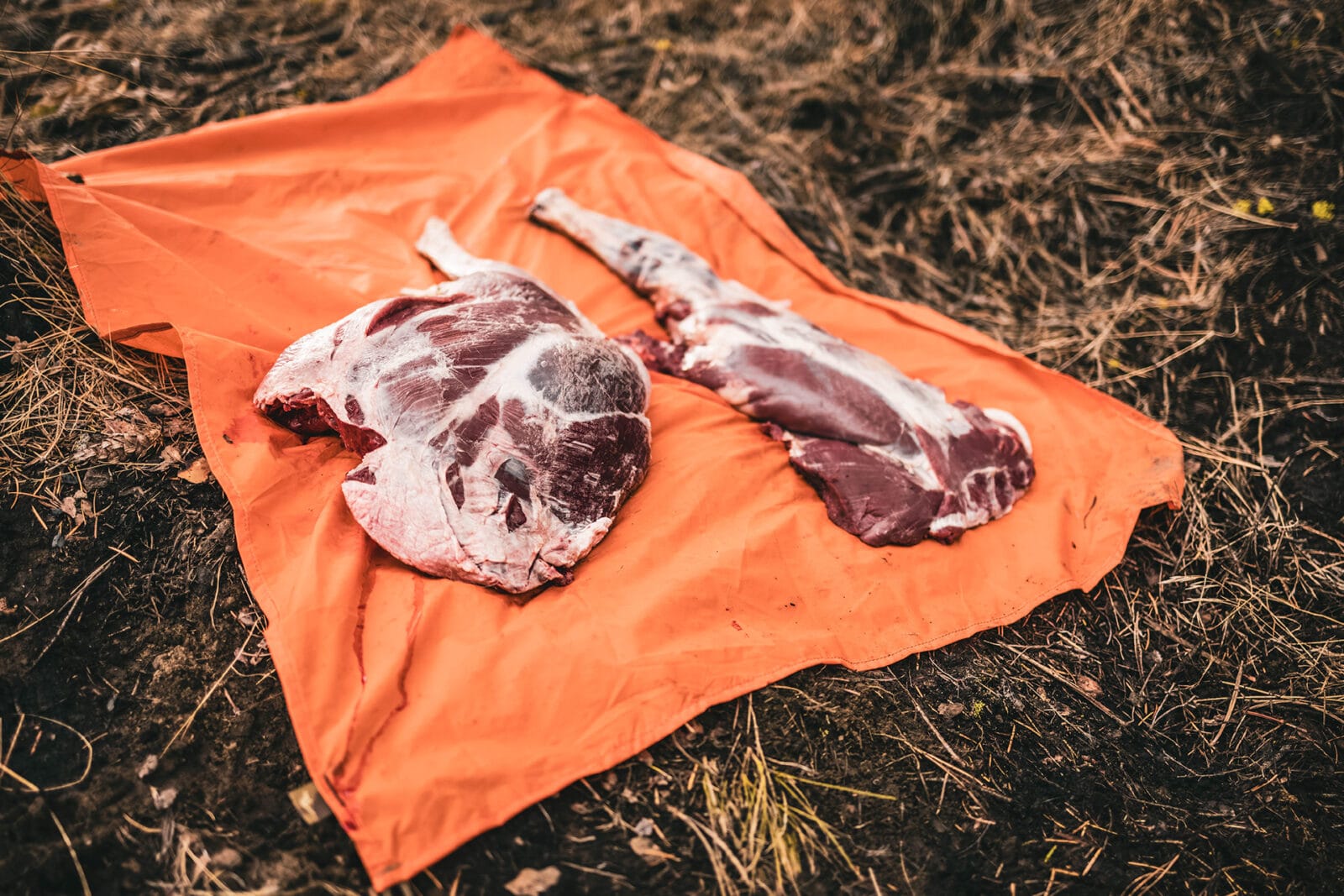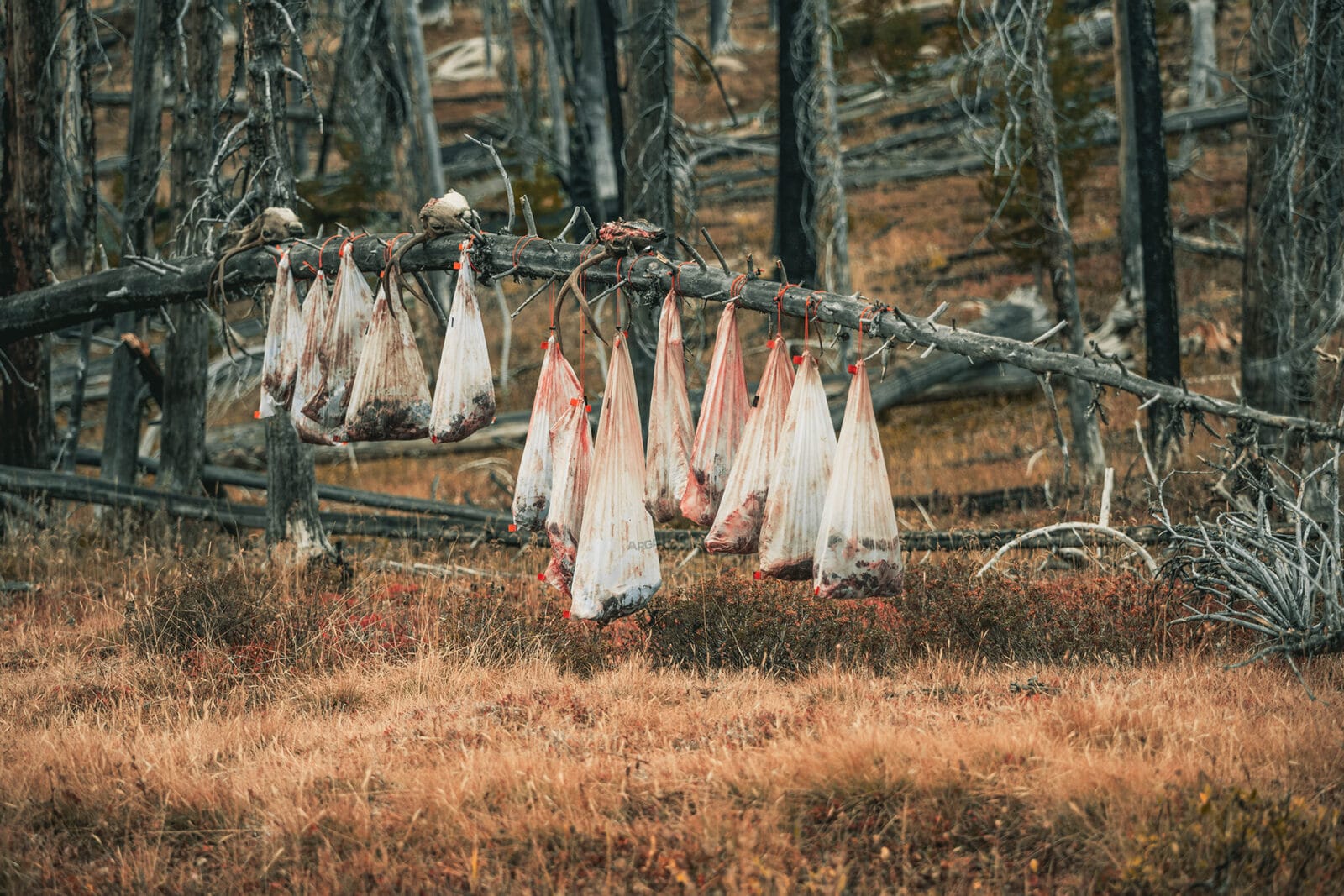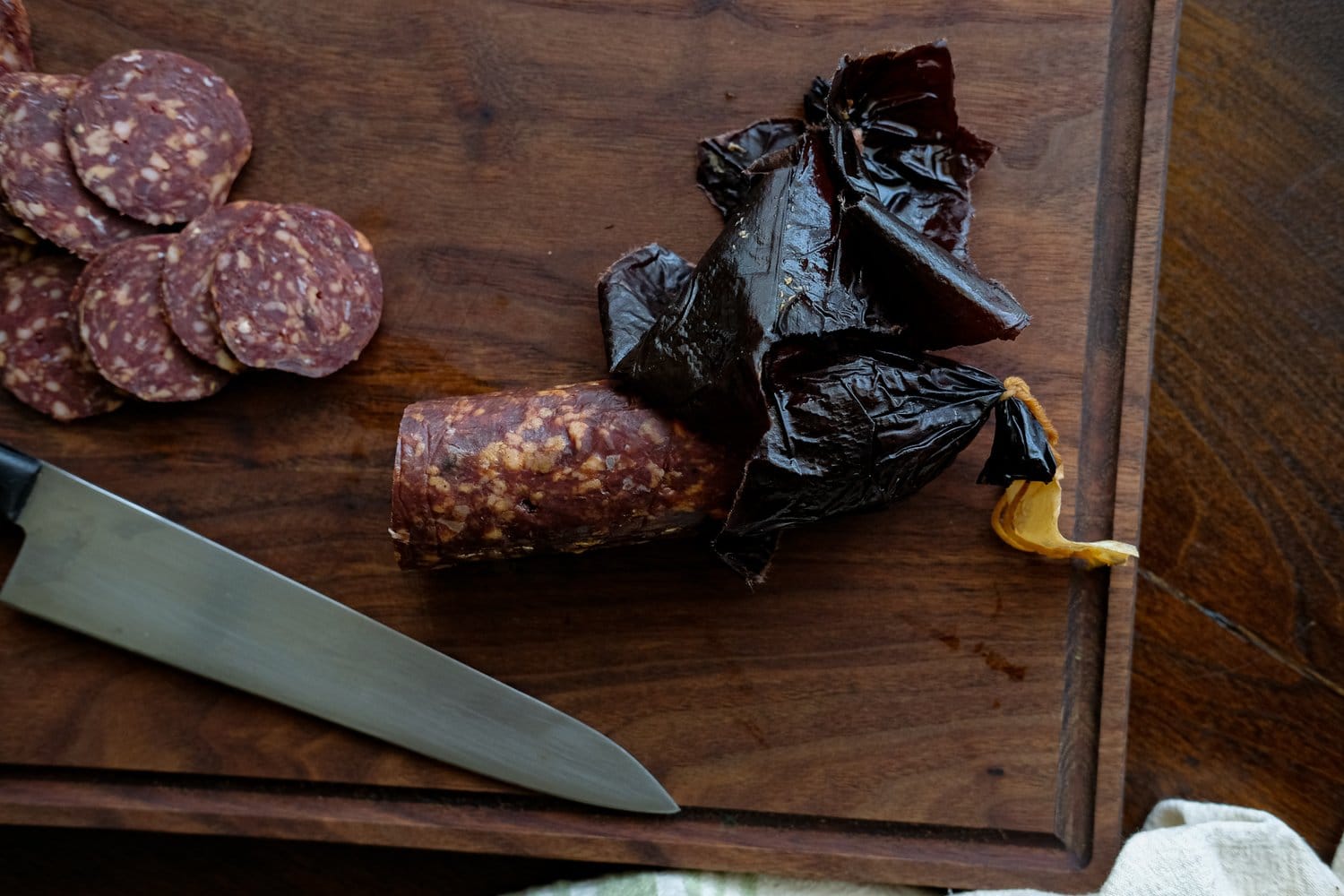Wade Truong, the mastermind behind Elevated Wild, is a lifelong Virginian, passionate hunter, and self-taught chef. A firm believer in the magic that comes from consuming the wild game we harvest, Wade’s work is centered around the belief that the more we participate with our varied environments, the more we understand the need to protect them.

Wade explores the hunting-culinary connection through Elevated Wild, where he features simple, elegant recipes using game meat and other harvested ingredients. While he covers classics such as Venison Summer Sausage and Grilled Softshell Crabs, he also includes unique recipes such as Beaver Cheek Tacos, Squirrel Egg Rolls, and Gooseneck Andouille. (Air Compression Roast Duck, anyone?)
We sat down with Wade to talk about five of the most commonly-heard myths surrounding the consumption of wild game versus store-bought meat, including:
- People don’t really eat what they harvest.
- Cooking wild game is difficult.
- Game meat tastes different than what I buy in the grocery store.
- Game meat tastes “gamey” and strong.
- It’s important to cook game meat to a “thorough done” stage.
It’s this culinary connection that keeps Wade engaged and creative in the kitchen. We sat down with the chef to talk about the top myths he comes across when talking with people about consuming wild game.
Watch “Barriers” to learn more about Wade, his passion for hunting, and the joy he carries into the kitchen:
Eating Wild Game
What’s the typical response from a non-hunter when you talk about eating wild game meat?
Wade: I get a lot of “Can you/do you eat it?” kind of questions. I used to find it annoying, but I realized that as we’ve gotten further and further away from our food, the scope of what our society considers to be “food” has been shrinking. You go to an average grocery store and there are only a handful of proteins to choose from… it’s no wonder that anything outside of beef, pork, chicken, or turkey is strange to most people.
And how does that differ from the hunters you talk with?
A lot of hunters ask me how I cook X, Y, or Z, like I have some magic answer. I think it stems from the previous statement about what we consider food. Wild game is often treated differently from its store-bought counterparts, both in the handling and in preparation. I’ve seen a lot of venison cooked in ways that no one in their right mind would treat beef. I think it’s an emotional response—for some reason, wild game is treated like it’s “unclean” or inferior, and needs to be cooked to death or smothered in other flavors. There are a few fundamental differences, but at the end of the day, you cook deer, duck, elk, or moose basically the same way you cook beef.

Wild Game Myths and Trends
What are the top “myths” you think people have surrounding game meat? Is it concern about sourcing? How to cook it? How it will taste?
I think the top myth would be that wild game is “gamey.” It’s one of those words that gets used to describe any meat that isn’t mild in flavor. Wild meats almost always have more flavor than farmed meats, but they only taste/smell bad when they’re handled or cooked improperly. I honestly think that we are so used to super mild, grain-fed protein, that anything that has depth of flavor is jarring and unpleasant. It’s a damn shame.
Have you seen any trends in terms of people gaining interest in consuming wild game meat?
I feel that there’s a bit of a wild food renaissance going on. I think online content has a lot to do with that, wild game content keeps looking better and better, and I think it’s helped a lot of people both find inspiration and try cooking methods that are different than the ones that were passed down to them.
In your mind, what’s the most important factor differentiating wild game and store-bought protein?
Fat content. Wild animals are constantly moving to find food and not become food. They never build up the intramuscular fat that domestic animals have in abundance. Because of this leanness, they are less forgiving if overcooked. If there’s one piece of advice I can give anyone cooking anything, it’s to err on the side of underdone. You can always cook something more, but you can’t uncook it.

Wild Game Meat: First Tastes and Favorites
Can you recall the first game you ever tried?
I think the first wild game I ever had was venison jerky when I was in elementary school. I honestly remember thinking it wasn’t really good. That might have partially shaped my view of hunting at an early age, because I didn’t have any interest in it until much later in life.
And what’s your favorite game to cook/eat/serve to friends?
Sika deer is definitely my current favorite. It’s got a little more earthiness than whitetail—almost like a mushroomy, forest flavor—and for some reason, it’s always tender. It blows people’s minds when I serve it to them; it’s one of the best red meats I’ve ever had. Also, because they’re a lot smaller and harder to hunt than whitetails, I don’t have a surplus of it. This makes every meal that involves sika deer a special one.

- Venison, cubed for grinder
- 33% pork fat, cubed
- 2% salt
- 2% dextrose
- 0.35% instacure #2
- 1% mustard powder
- 0.2% coriander, ground
- 0.1% garlic powder
- 0.5% paprika
- 0.5% coarse black peppercorns
- Bactoferm f-RM-52
- Distilled water
- Weigh the venison (in grams) that you will be using to make the sausage. Use this weight to calculate the amount of each ingredient you will be using. For example, if you are starting with 1000 g of cubed venison, you will need 330 g of pork fat.
- Cube the venison and pork fat, and measure your spices accordingly. Mix all ingredients except water and bactoferm, cover, and refrigerate overnight.
- Reactivate bactoferm as directed on the package. Set aside.
- Grind the meat mixture through a fine die. Using a paddle attachment on a stand mixer on a low setting (or wooden spoon), mix ground meat until incorporated. Mix in reactivated bactoferm. Mix for 1-2 minutes until the meat is tacky.
- Stuff into 1.5-2.5” fibrous casings- use hog rings or twine to tie off the ends.
- Incubate for 24 hours at ~85F temp and 85%+ humidity.
- Cold smoke (sub 100F) for 3-4 hours.
- Weigh and record starting weights.
- Hang sausages in a curing chamber until 30-35% weight loss is achieved.
Read Wade’s original recipe here.
Notes from Wade: “As always, we use metric measurements and go by percentage weight for our sausage recipes. We do this to make the recipes easy to scale and replicate exactly, batch after batch. If you’re thinking of getting into sausage making and don’t own a kitchen scale, please do yourself the favor of buying one. They’re inexpensive relative to the cash outlay of all the other equipment you’ll need to pick up, and will save you a lot of effort in terms of scaling recipes into imperial measurements. To measure your ingredients, first weigh the meat you are using, and then calculate the weight of all the other ingredients based on the weight of the meat.“
Loved this recipe? See our latest on How To Make Pemmican.